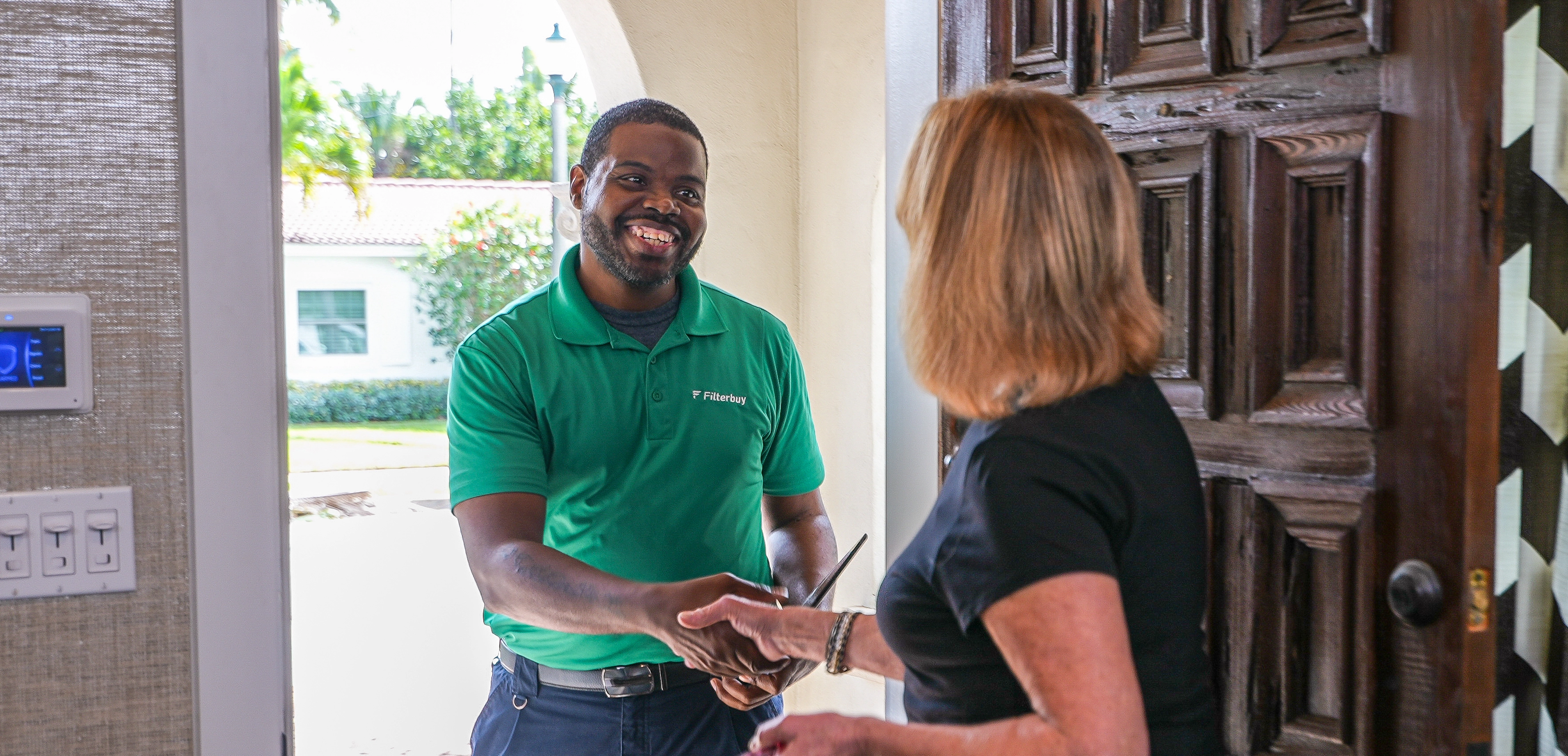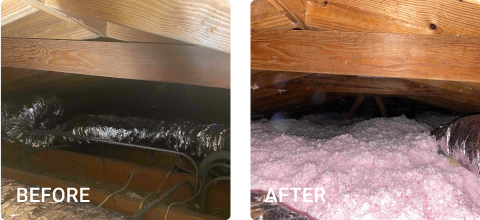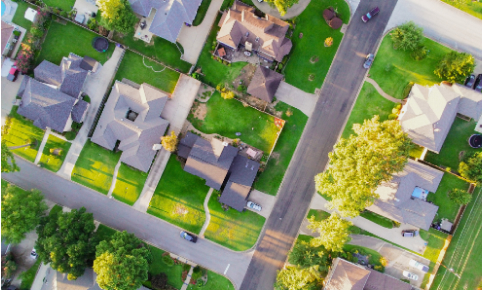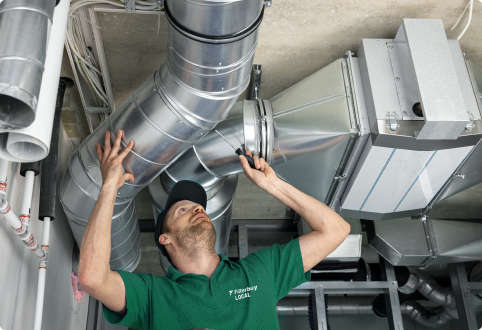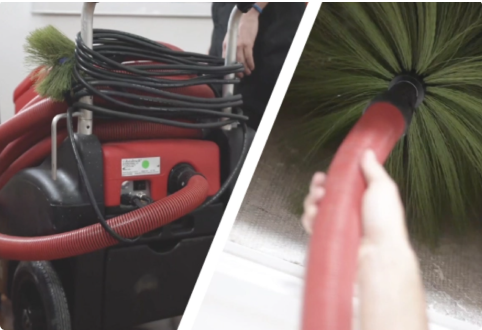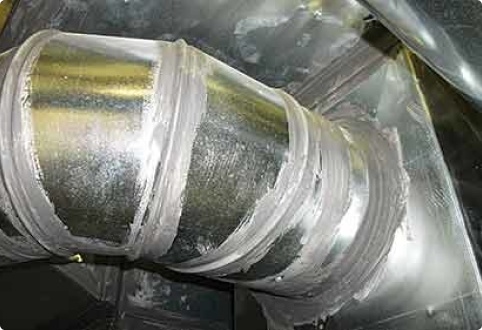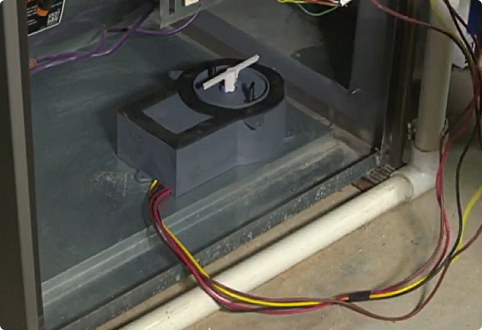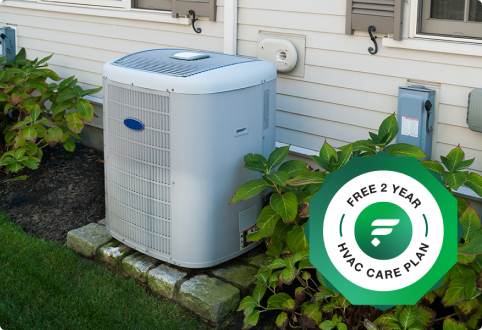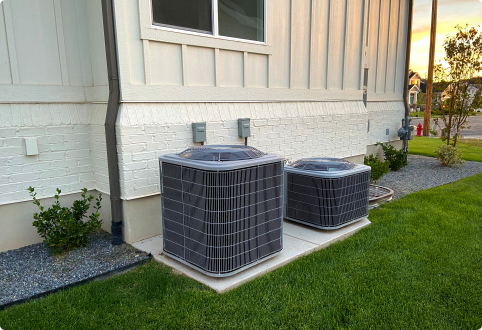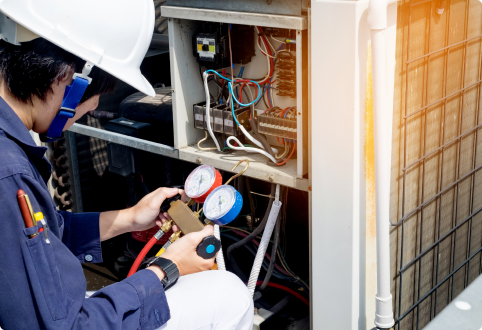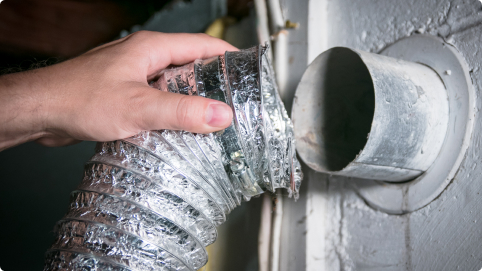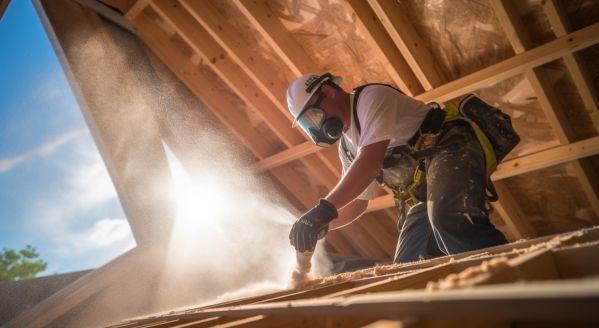Welcome to Filterbuy HVAC Solutions, the best attic insulation installation service company proudly serving in and near the greater Fort Pierce, FL area. Please let us know how we can help solve your Fort Pierce attic insulation installation needs with professional, affordable, and fast residential and commercial HVAC services by getting a free online quote or by giving our friendly HVAC specialists a call. We look forward to hearing from you!
Attic Insulation Installation Services in Fort Pierce FL
Attic insulation installation services in Fort Pierce, FL are integral to maintaining an energy-efficient home. Properly installed and maintained attic insulation can reduce heating and cooling costs by up to 20%, helping homeowners save money on their utility bills year-round. Additionally, well-insulated attics can provide improved comfort within the home, blocking out weather conditions such as wind and rain while providing a better sound barrier between floors. This article will discuss the types of attic insulation available for installation, as well as its benefits and cost considerations when deciding on which type is best suited for each individual homeowner's needs.
The first consideration when selecting attic insulation is understanding what kind of material works best in certain climates or regions of the country. In areas with colder temperatures during winter months, it may be beneficial to install fiberglass batt insulation or spray foam insulation due to their thermal resistance properties that help keep air from going in or out of the house too quickly. On the other hand, if there are higher ambient temperatures outside throughout most of the year, then loose-fill cellulose might be recommended since it has excellent breathability characteristics that make it easier for indoor air to circulate more easily without getting trapped inside wall cavities or attics.
In addition to climate considerations, homeowners should also take into account personal preferences regarding noise control and budget restrictions when choosing an appropriate type of attic insulation for their homes. Different materials have different levels of noise reduction capabilities; some offer greater soundproofing than others depending on how they are installed. As far as cost goes, although all forms of attic insulation tend to pay off over time through reduced utility bill costs, certain types require larger upfront investments compared to others. Ultimately, these various factors must all be weighed before making a final decision about which form of attic insulation installation is right for each individual situation.
Benefits of Proper Insulation
The importance of proper insulation in any structure is unparalleled. Its presence can be the difference between a comfortable and safe living space, or one that is far from it. It goes without saying that the benefits of having high-quality installation services for attic insulation are immense. From reducing energy costs to maintaining indoor air quality, well-installed insulation has numerous advantages not to be overlooked.
Beyond financial savings, properly installed attic insulation also helps regulate the temperature within a home. This ensures comfort levels remain consistent regardless of outdoor climate conditions; no more sweltering summer days or frigid winter nights! Additionally, an insulated attic prevents moisture accumulation and preserves structural integrity by preventing water damage caused by condensation buildup on surfaces like windows and walls.
Ultimately, installing attic insulation is an invaluable investment into any property's safety and well-being – both environmental and physical alike. By providing protection against heat transfer as well as safeguarding against potential damages due to moisture build-up, professional installation services for attic insulation offer substantial rewards for homes and businesses alike. With this in mind, let us turn our focus toward exploring the various types of insulations available today.
Types of Insulation
When it comes to insulation, there are several types available for installation. Each type of insulation offers its own unique benefits and drawbacks that must be considered when making a selection. This section will provide an overview of the different types of insulation so homeowners can make an informed decision on which option is best for their home.
Fiberglass Insulation is a popular choice due to its affordability and effectiveness at keeping heat out in the summer months and preventing cold from entering in the winter months. It's made from recycled glass fibers, which makes it environmentally friendly as well. Fiberglass has excellent soundproofing properties but needs to be installed correctly or else it won't perform optimally.
Cellulose Insulation is another commonly used form of insulation because it’s relatively inexpensive and effective at regulating temperatures. Cellulose insulation excels at noise reduction since it absorbs sound waves better than other materials do. On the downside, cellulose requires more maintenance than some other forms of insulation; if left unchecked, moisture buildup can occur leading to mold growth or pest infestation issues over time.
Spray Foam Insulation is becoming increasingly popular among homeowners due to its efficient installation process and superior performance capabilities compared with traditional fiberglass-based products. Spray foam expands upon contact with air filling any gaps or cracks within the walls where energy loss may occur without proper sealing. The biggest drawback associated with spray foam is cost – this type of insulation tends to be one of the most expensive options available, especially if applied professionally by an experienced contractor.
The right type of insulation depends largely on personal preference as well as budget requirements and climate conditions specific to each individual location. Before selecting a particular product, homeowners should consider how much they're willing to spend upfront versus long-term savings related to efficiency gains provided by certain types of insulations. Additionally, considering local weather patterns can help determine what kind of material will yield optimal results based on extreme temperature variations throughout the year. With these factors taken into consideration, homeowners can then move forward with deciding how best to meet their needs when determining insulation needs for their homes.
How to Determine Insulation Needs?
Studies show that more than 50% of American homes are under-insulated. In order to ensure a comfortable living environment and adequate energy efficiency, it is important to determine the insulation requirements for your home. The first step in determining these needs is taking into account the size, age, and type of construction of the house. Older houses typically require more insulation due to aging materials or lack thereof in some areas. Conversely, newer houses often come with higher levels of insulation already installed.
The second factor to consider when assessing insulation needs is climate. Homes located in cold climates generally need higher R-values (a measure of thermal resistance) than those in warmer climates. For example, attics should be insulated between R-38 and R-60 depending on location. Additionally, walls may also require additional insulation such as batts or rolls based on regional weather conditions - usually around an R-13 value.
Finally, the amount of air infiltration through cracks and crevices throughout the house should be taken into consideration when calculating the necessary amounts of insulation needed. To find out what kinds of solutions will best suit your home’s needs, consulting with an experienced contractor can help identify any problems before they arise while providing cost-efficient solutions tailored specifically to you. Moving forward from here, homeowners must decide whether they want to attempt installing attic insulation themselves or hire a professional service provider like Fort Pierce Insulation Services for expert installation services.
Do-It-Yourself or Hire A Professional?
Once an insulation need has been determined, homeowners must decide whether to install the material themselves or hire a professional. Although DIY projects can often be fun and rewarding, there are some valid reasons why it is usually best to hire a pro for attic insulation installation.
One reason to consider hiring a specialist is that they have access to advanced equipment, such as blowers, which make installing certain types of insulation much easier and more efficient than doing it oneself. Specialists also understand all the safety precautions associated with working in attics including proper ventilation systems, eye protection, and protective clothing. Additionally, many professionals offer warranties on their work that provides homeowners assurance if something goes wrong after installation.
Finally, when selecting a contractor for attic insulation installation services in Fort Pierce FL, one should look at factors such as cost estimates from multiple contractors; type of insulation products used; how long it will take to complete the job; any applicable permits required; customer reviews and ratings; proof of insurance coverage by the company; and references from prior customers. Taking these steps helps ensure that the right decision is made about who will handle this important project.
Factors to Consider When Choosing an Insulation Company
Are you considering installing attic insulation in your home? It is essential to choose an experienced and reliable contractor for a successful installation. But, how do you know which company best meets your needs? Here are some important factors to consider when selecting an insulation contractor.
First, find out if the company specializes in residential or commercial insulation services. Ensure they have the necessary certifications, licenses, and insurance coverage required by local building codes. Also, research the latest technologies used in energy-efficient insulation solutions such as fiberglass batts and blown cellulose materials. Ask about their experience with different types of roofs and walls too.
Next, inquire about customer service policies including warranties on labor and materials. Check whether the company offers free consultations or estimates before starting work on your project. You should also read reviews from past customers to get an idea of what their experiences were like working with that particular business. Make sure that all of these details are included in any contract you sign so that there will be no surprises down the road.
Choosing the right insulation contractor can make a big difference in achieving optimal thermal comfort at home while saving money on energy bills over time. Therefore, it's important to take some extra time researching companies before hiring one for your project. This ensures that you select a reputable business capable of providing quality services at competitive prices
Cost and Energy Savings from Insulating Your Attic
The energy savings from attic insulation installation can be considerable. Properly installed and maintained, it can reduce heating and cooling costs by up to 20 percent or more. It also helps ensure that the temperature in the home is comfortable year-round, as well as reducing outside noise levels. Furthermore, insulation helps keep out dust and other allergens, which can help improve indoor air quality. Additionally, it reduces condensation buildup on walls and ceilings due to changing temperatures throughout the day.
In addition to these benefits, insulating your attic may qualify you for rebates or tax credits depending on where you live. Many utility companies offer incentives such as cash-back programs when homeowners upgrade their homes with energy efficiency improvements like insulation installation. The money saved through reduced bills as a result of installing attic insulation will often pay for itself in just a few years’ time.
There are different approaches to installing attic insulation depending on factors such as budget, location of existing infrastructure, climate zone, and desired R-value (insulation rating). To find an installer who provides quality service at a reasonable price, it's best to research local contractors thoroughly before making any commitments. By taking the time to research available options, homeowners can make an informed decision about how best to proceed with their particular situation and reap all the financial and environmental benefits of properly insulated attics.
Different Approaches to Installing Attic Insulation
There are several approaches to installing attic insulation. The professional installation provides the best results, but some homeowners opt for do-it-yourself (DIY) installation as well. The most common type of DIY approach is rolled batt or blanket insulation. This involves unrolling long rolls of insulation and cutting them to fit into an area with a knife or scissors. Batt insulation can be purchased in various thicknesses depending on the size of the space being filled and climate needs. Another option is blown-in cellulose insulation, which requires special equipment such as an air compressor and a blowing machine. Blown-in insulation must be professionally installed to ensure proper coverage of hard-to-reach spots like corners and between beams. Finally, foam board panels may also be used when insulating attics. Foam board panels provide excellent moisture protection, fire resistance, and thermal performance; however, they require careful measurements to ensure a snug fit throughout the entire space that is being insulated.
Tips for Installation Success
Attic insulation installation is an important step in ensuring a home's energy efficiency. To ensure the job is done correctly, there are several things to keep in mind when selecting and installing attic insulation. First of all, selecting the right type of insulation for the climate and specific area is key. Insulation should be rated to last 20 years or more, have good fire resistance ratings, and appropriate R-values depending on the region. Additionally, proper ventilation during installation is essential as it helps circulate air within the space and reduce excess moisture buildup which can lead to mold growth. Finally, using quality materials with reliable fasteners like nails or staples will help make sure that everything stays securely in place over time without issue.
When considering any sort of attic insulation project, it's also important to plan ahead for potential issues that may arise. This includes making sure that any wiring or electrical boxes located in the attic are properly protected from dust and debris before starting work and checking for any signs of water damage prior to installation. By taking these steps into account beforehand, homeowners can rest assured that their attic insulation will be installed safely and effectively.
Warning Signs of Poorly Installed Attic Insulation
When inspecting an attic insulation installation, there are several warning signs to look out for that may indicate poor workmanship. These include gaps or holes in the insulation, insufficient coverage of the joists and rafters, and visible mold growth on any part of the insulation material. Gaps or holes can allow air infiltration into the house which will lead to increased energy bills due to higher heating and cooling costs. Insufficient coverage of the joists and rafters often results in uneven temperatures throughout a home as warm air escapes through these areas. Visible mold is another indication of improper installation because it could indicate inadequate ventilation and moisture buildup in an attic space.
In order to ensure proper installation of attic insulation, homeowners should make sure their contractor follows all local building codes when performing the job. Additionally, they should inspect their new insulation after installation is complete to verify that there are no gaps or other irregularities. In some cases, additional repairs such as sealing around window frames or adding extra layers of batting may be necessary if deficiencies are found during the inspection. Taking these steps can help prevent long-term problems from developing due to faulty workmanship.
Regular maintenance and troubleshooting can also extend the life expectancy of attic insulation by ensuring optimal performance over time. Homeowners should consider scheduling regular inspections with a qualified professional who can detect potential issues before they become serious problems. Additionally, using quality materials designed specifically for climates in one's area will typically result in better overall performance than generic off-the-shelf products purchased at big box stores. Following these tips can help ensure that an attic remains properly insulated for years to come while providing maximum energy efficiency throughout a home.
Maintenance and Troubleshooting
Maintaining proper attic insulation installation is a necessary task that must be taken seriously. In the same way, one takes care of their body with exercise and healthy eating, maintaining insulation can help keep energy costs low while keeping people comfortable in their home year-round. It is essential to regularly inspect attic insulation for any signs of damage or changes in performance. By taking matters into your own hands and paying attention to warning signs, issues may be prevented before they become too costly or difficult to repair.
To ensure optimal performance of an existing installation, homeowners should contact professionals who specialize in fort pierce fl-based attic insulation services at least once per year. This will allow specialists to detect any problems early on and make recommendations for repairs as needed. Additionally, it is important to check if there are any loose pieces of material that could lead to drafts or further deterioration over time. Finally, pay close attention when inspecting areas where pipes or wires intersect walls or ceilings; these could cause heat loss if not properly sealed or insulated correctly.
By adhering to regular maintenance and troubleshooting routines, those living in Fort Pierce FL can rest assured knowing their homes are kept warm during cold winter months and cool during hot summer days without breaking the bank on energy bills. Taking preventative action now will save money and headaches down the road, making sure attics stay well-insulated for years to come.
Frequently Asked Questions
How Much Does It Cost to Insulate an Attic in Florida?
The cost of insulating an attic in Florida can vary based on factors such as the size of the attic, type of insulation material used, and labor costs.
What Is the Best Insulation for an Attic in Florida?
The best insulation for an attic in Florida depends on factors such as the climate, budget, and existing insulation.
What Is the Most Cost-Effective Way to Insulate an Attic?
The most cost-effective way to insulate an attic is to consider factors such as the R-value of the insulation, installation costs, and long-term energy savings.
Should I Remove Old Attic Insulation Before Adding New?
Removing old attic insulation before adding new insulation is recommended if the old insulation is damaged, damp, or contains mold.
Can You Put Too Much Insulation in Your Attic?
It is possible to put too much insulation in your attic, which can lead to issues such as compressing the insulation, reducing ventilation, and potential moisture problems.
Should I Spray Foam My Attic in Florida?
Spray foam insulation can be an effective option for attics in Florida as it provides a tight seal and high R-value, but it's important to consider factors like cost and installation process.
Is Blown in Insulation Better Than Rolls?
Blown-in insulation and rolls both have their advantages and disadvantages. The better option depends on factors like the attic layout, budget, and personal preferences.
Can I Add Insulation to My Attic Myself?
Adding insulation to an attic yourself is possible for some homeowners, but it's important to follow proper safety procedures and installation guidelines.
Is Adding Insulation to an Attic Worth It?
Adding insulation to an attic is generally worth it as it can improve energy efficiency, increase comfort, and potentially lower heating and cooling costs.
What Is the Code for Ceiling Insulation in Florida?
The code for ceiling insulation in Florida may vary based on the specific location and building regulations. It's recommended to consult with local authorities or building professionals for accurate information.
What Is the Labor Cost to Install Insulation?
The labor cost to install insulation can vary depending on factors like the type of insulation, size of the attic, and complexity of the job. It's advisable to obtain quotes from multiple contractors for accurate pricing.
How Often Should Attic Insulation Be Replaced?
Attic insulation generally does not need to be replaced frequently if properly installed and maintained. However, if insulation becomes damaged, damp, or loses effectiveness, it may need to be replaced.
Here is the nearest branch location serving the Fort Pierce area…
Filterbuy HVAC Solutions - West Palm Beach FL
1655 Palm Beach Lakes Blvd ste 1005, West Palm Beach, FL 33401
(561) 448-3760
https://maps.app.goo.gl/HPD7oZDKxWjdS8K56

.webp)
.webp)
.webp)
.webp)






